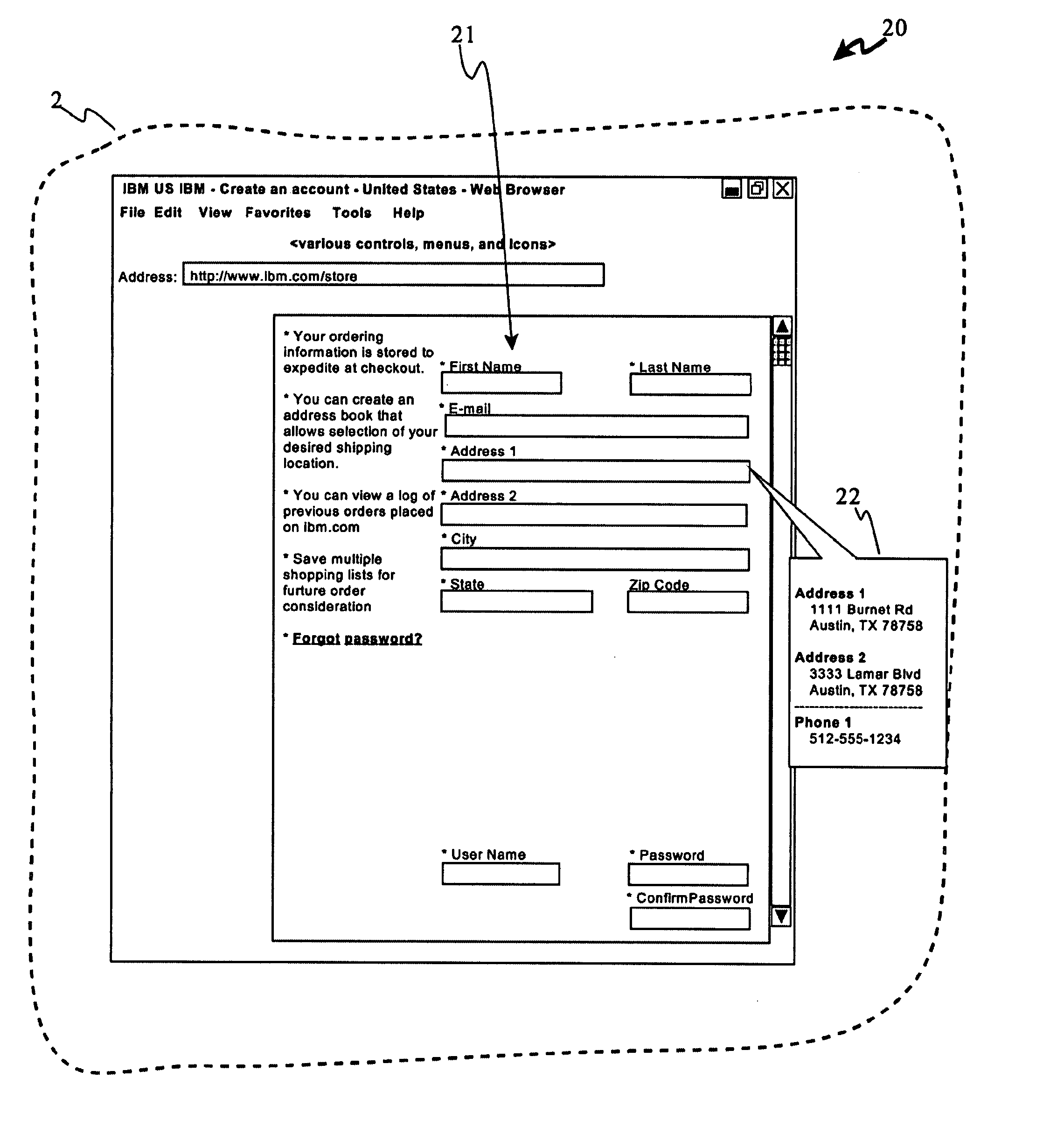With so many users employing
the Internet as a way to manage personal data and household financial information, consumers redundantly register numerous pieces of vital account information with various companies each day, often to
gain access to these free services or subscriptions.
Typing or entering repetitive information in this manner is not only tedious, but also drastically reduces the customer acceptance process.
From a user's perspective, the process of registering and maintaining personal login identification and
password becomes cumbersome.
Furthermore, since each person may have multiple accounts, tracking and managing such account information can be problematic.
Several problems arise as user's create accounts with numerous web sites and web services.
First, it may become difficult to remember all of the various account usernames, especially for the sites which automatically assign an account username to each new user.
Some web sites, though, allow a user to select or pick his or her own account username, which leads to two problems.
But, if the user's preferred name is available, a second problem may arise in that the user may, and often does, select the same account username he or she has for one or more other web services.
While this is more convenient for the user in that it is easier to remember the account names, it presents a security risk to the user if the account username is ever compromised.
This
web site operator, however, may not consider their services to warrant strong protection from hackers, and may not even employ secure login procedures such as Secure Socket Layer (“SSL”), Secure Hyper Text Transfer Protocol (“HTTPS”), or
Public Key Infrastructure (“PKI”) technologies.
Likewise, the same problems exist with passwords for online accounts.
A large number of assigned passwords allow for greater security from account to account should one of the passwords be compromised, but may be difficult for the user to remember all of the passwords, which may result in the user writing or storing all of them in a common area (e.g. on a paper note in a
desk drawer, in a note in a PDA, or in a
password manager file).
If the repository of collected passwords is ever compromised, the user's various accounts are vulnerable to unauthorized access.
Again, like the account username problem, if a common password is compromised, it may allow a
hacker to access more than one account.
Hardly a week passes where a new security flaw in a common
operating system is announced, a new successful
virus or worm is released, a new spyware is discovered, or a company is caught not protecting their clients' and users' personal data, including usernames and passwords.
Additionally, many users often need to allow other people access to their online accounts, even if for a limited purpose or time.
Some online accounts, however, do not allow the account username to be changed, so the user's may actually close the old account and create a new one.
This process of manually managing accounts, usernames, and passwords through changes over time only accentuates the aforementioned problems.
In addition, the drop-down data may include information previously entered by other users of the same computer, which leads to a potential security lapse.
Furthermore, the user still has the problem of managing multiple account login data in a potentially insecure fashion.
These processes are designed to automatically complete web forms, including login screens, but actually have numerous limitations upon closer analysis.
Firstly, a user's personal information is stored on each user's local computer, with their corresponding security issues and convenience limitations (e.g. the user's
data input originally on one computer would not be available when the user logs in from another computer).
Secondly, AutoFill requires
web page authors to define field names using the Electronic Commerce
Modeling Language (“ECML”) standard, and currently there are only limited fields that AutoFill can complete.
As a result, most registration and log in pages today are not compatible.
The problem outlined has created much
frustration and inconvenience, and some users have actually created data repository, such as a
Lotus™ Notes™
database, to help
handle this problem.
However, this method has a number of drawbacks, including dependency on a computationally-intensive application (e.g.
Lotus Notes), and laborious manual steps being required to input the information.
Additionally, such methods lack browser integration to automatically
record filled data or fill forms, ability for fast search or selective view on relevant data based on the form, as well as convenient user interfaces to enable user to perform form fill tasks quickly. FIG. 1 provides a screen shot (3) of a portion of a computer display (2) upon which a typical user's local Notes
database with over 900 sets (4) of account usernames (e.g. “IDs”) (5) and passwords (6). FIG. 1 only shows entries for the letter “A” with password column (6) collapsed.
 Login to View More
Login to View More  Login to View More
Login to View More 


